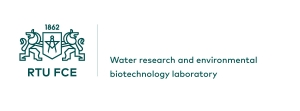Senior researcher Kishore Babu Ragi
Main research interests:
Research Experience and Expertise:
Dr. Ragi spent about a decade on the numerical modeling of climate and atmospheric chemistry with various models from simple box models (e.g., chemical kinetic models such as BOXMOX) for the atmospheric chemical kinetic studies to Land Surface Models (e.g., BATS, CLM, CoLM) for the sensitivity studies on the impact of forests on local precipitation to Coupled Regional Climate Models (e.g., RegCM and WRF) for various process sensitivity studies in the Congo rainforest to Coupled Meteorology-Chemistry models (e.g., WRF-Chem) for the studies on the impact of a biosphere on ground-level ozone.
Conference Presentation:
1. The Opening Workshop for the Climate theme of the SAMSI program on Uncertainty Quantification was held on Monday-Wednesday, August 29-31, 2011, at the Marriott Pleasanton, in Pleasanton, California, USA.
2. Climate Down-scaling Technique: The Issues, Present Use in Science, and How It Could Be Used Innovatively in the Regional Climate Modeling Research. during 17-19, December 2012 at the Indian Institute of Space Science and Technology (IIST), India.
3. Exploration of Global Physical Process Sensitivities on Convergence of Water-vapor and Wetness of Land in Kenya with a Newly Down-scaled Climate Model (EMIC-RCM) during 15-18, October 2013 in Arusha, Tanzania.
4. Canopy Roughness Boundary Layer Resistance for Better Quantification of Sensitivity of Deforestation Scenarios, 14-18, December 2015 at Moscone Center, San Francisco, USA (AGU 2015).
5. An Effective Way to Understand the Earth System for the Climate Scenarios: selected as one of three finalists at AGU Student Video Contest and uploaded on YouTube by AGU.
6. An Empirical Method to Estimate Rainfall Amounts over the Congo Rainforest Using A Land Surface Model, 12-14, February 2016 at the Research Scholars’ Week (RSW2016) NIT Rourkela, India.
Major publications:
1. Kishore B. Ragi, Rajkishore Patel, and James R. Stalker (2019): Dynamics of Daytime Ozone Chemistry by Regional Vegetation Change in the Congo Brazzaville-Kinshasa. https://doi.org/10.13140/RG.2.2.26414.56648
2. Kishore B. Ragi, James R. Stalker, and Raj Kishore Patel: An Empirical Method to Estimate the Vegetation Scenarios on the Transpirational Convective Precipitation over the Congo Rainforest using A Land Surface Model. https://doi.org/10.13140/RG.2.2.36480.89602
3. Kishore B. Ragi, Raj Kishore Patel and James R. Stalker: Plant Sensible Heat Flux: Application of Kinetic Theory of Gases to Estimate Leaf Boundary Layer Resistance.
4. Kishore B. Ragi: Preparation of WRF-Chem Emission Input for multiple times iteratively using
PREP-CHEM-SRC, March 2017, the Shell-Scripting code. DOI: 10.13140/RG.2.2.25855.82083

